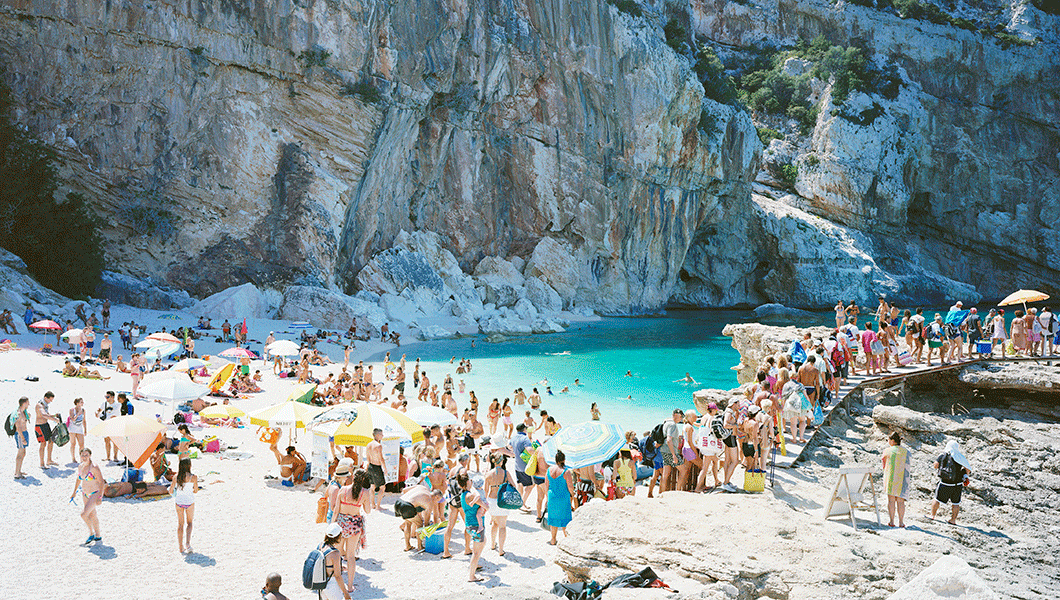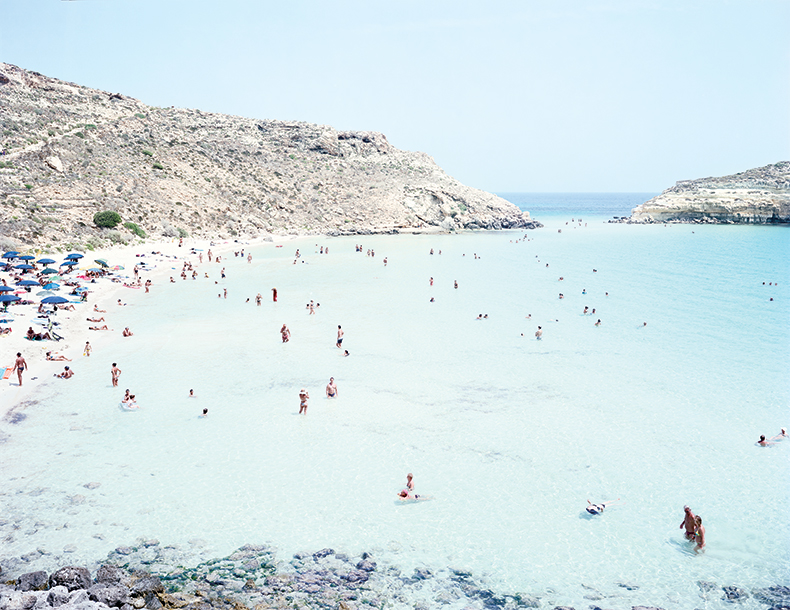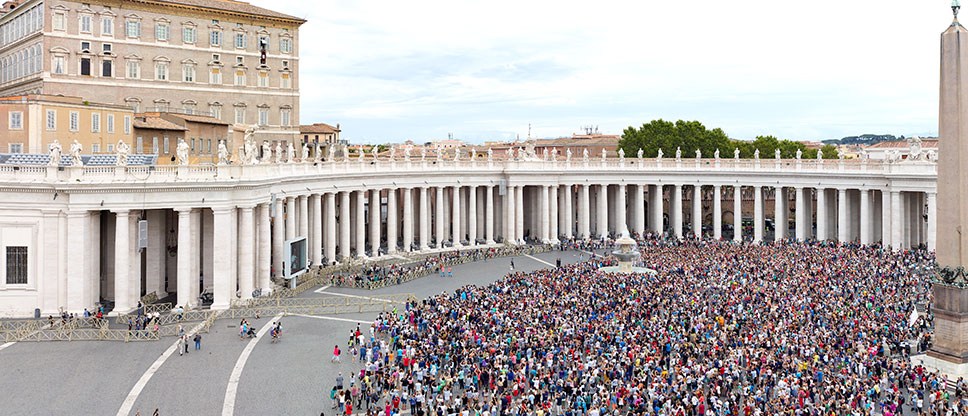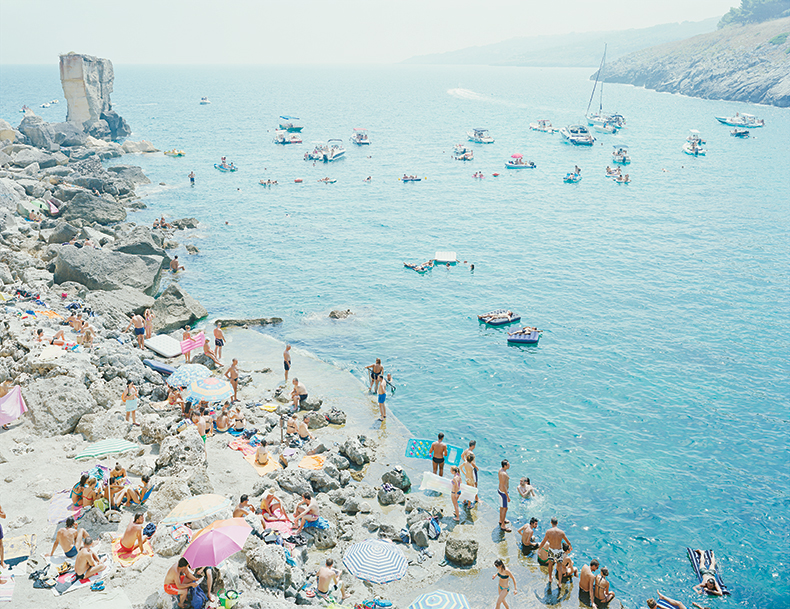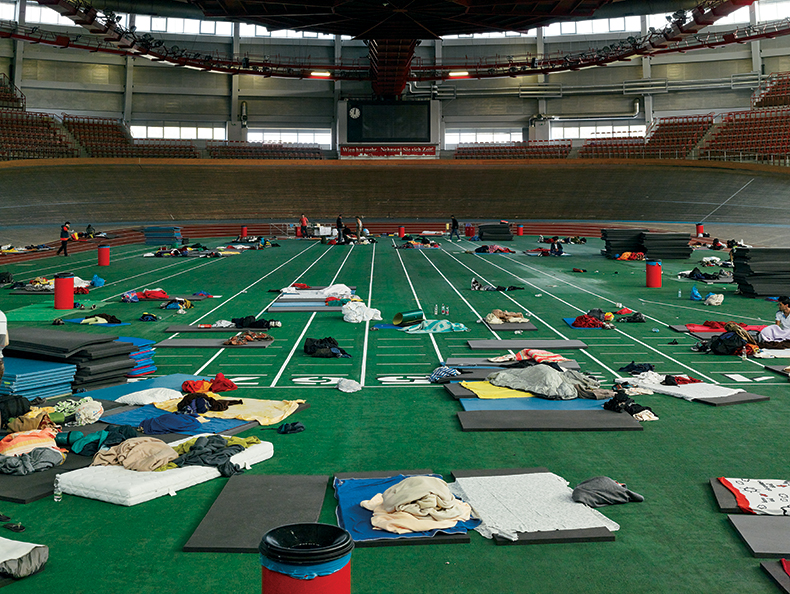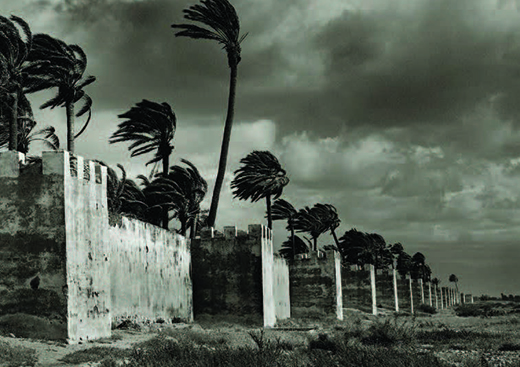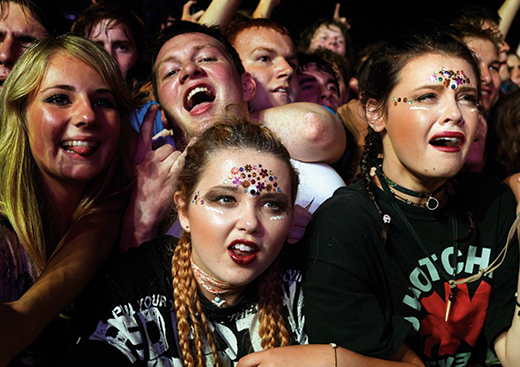Deserted, unspoiled beaches are often associated with perfection. As I was walking along the beach on one of those perfect days in early June, I suddenly flashed on a particularly compelling photograph by Massimo Vitali—one of his famous crowded beach scenes viewed from a great distance, with throngs of people milling about like miniature dots along the Italian shoreline. I was struck by the contrast of his vision of beauty and the desolate beach ahead of me.
Vitali is known for his complex and arresting panoramic photographs. He prefers that his work not be simplified as merely “beautiful,” though he admits that, on the surface, his pictures are much nicer than he would like them to be. I myself have always found Vitali’s placement of humans dwarfed against vast natural landscapes to be strangely sobering.
In that moment, I found myself longing for the vitality abundant in Vitali’s images—a human dimension to juxtapose against the pristine natural scene I was experiencing. I went back to look at his photographs and realized that Vitali had gotten at something … a struggle with which I am all too familiar: how to marry the complex, difficult, often messy human realities with the surface dimensions of style and fashion. I was compelled to dive straight into the center of this contrast between the perfect and the imperfect, between the light of possibility and the darkness of human destiny, between human fragility and the eternal power of the natural world. So I headed to Lucca, Italy, to meet with the man who has made a career out of capturing these contradictions in single frames.
My first exchange with Vitali came in an email from his iPhone and went like this: “Can you do it a bit later? I am photographing the Pope”—as casual and direct as if he were telling me he had an errand to run. I found him to be just as laid-back in person. We met in the morning for an espresso at his usual spot in Piazza San Michele. Vitali arrived on a state-of-the-art bicycle, wearing Birkenstocks and a black puffer vest.
Returning to his home and studio afterward, we jumped right in: “You have the landscape, you have the sociological and tropological art and other things—the more people get out of it, the better it is for me,” he says. As he walks me through the layers of his images, I ask whether he considers his work a study of the human condition. “I hope so,” he replies, “that it’s contradicting, that it’s not only nice pictures, girls in bikinis and blue sea … I hope there is more. The beach is a good place to try to understand the way we are, the way we behave.”
To better observe and capture the subtleties of human behavior, Vitali builds himself a visual study platform about 3 meters (10 feet) high. “The beach is a very good way of spying on humanity,” he says.
Vitali credits a Joel Meyerowitz image of a Cape Cod beach scene as the inspiration for his own interpretation and perspective on beach photography. “I remember exactly this picture on the beach,” he explains, “and everybody was looking at the sea, and he was taking pictures on [from] the back. So I remember the first time I went to take these pictures of the beach. I wanted to be in front, I wanted to be in the sea—looking at the people.”
It’s all about the people for Vitali. “I would never go to a beach without people—it’s just boring. I can’t survive [without them].” Vitali’s curiosity about people is not disconnected but deeply empathetic, which is clear as he describes his most recent work documenting the Syrian refugees migrating into Europe.
Massimo Vitali refuses to photograph refugees in their most vulnerable moments of arrival. “This is my little fight against reportage photography,” he says, insisting that when he takes his photographs that the refugees are in “normal places that look like normal people traveling. I’m trying to transform the idea of this disaster [of refugees], of millions of people invading Europe, into something very familiar.”
I left Lucca with the impression that Vitali has walked through the looking glass and is looking back at us. But his view from a great distance, his insistence on complexity and layers of meaning, is not without tremendous compassion and undeniable beauty. I returned to my own world inspired and hopeful about the possibility of resolving all the different passions and pursuits that the world suggests are contradictory: the head and the heart, style and substance, aesthetics and ideas, love and perspective.
Scott Fitzgerald said, “The test of a first-rate intelligence is the ability to hold two opposed ideas in mind at the same time and still retain the ability to function.” The evidence of Vitali’s work and life shows us that he has done much more than function. His quest has raised the stakes for all of us who work in creative fields and want our lives to matter more. Grazie, Massimo.
—


